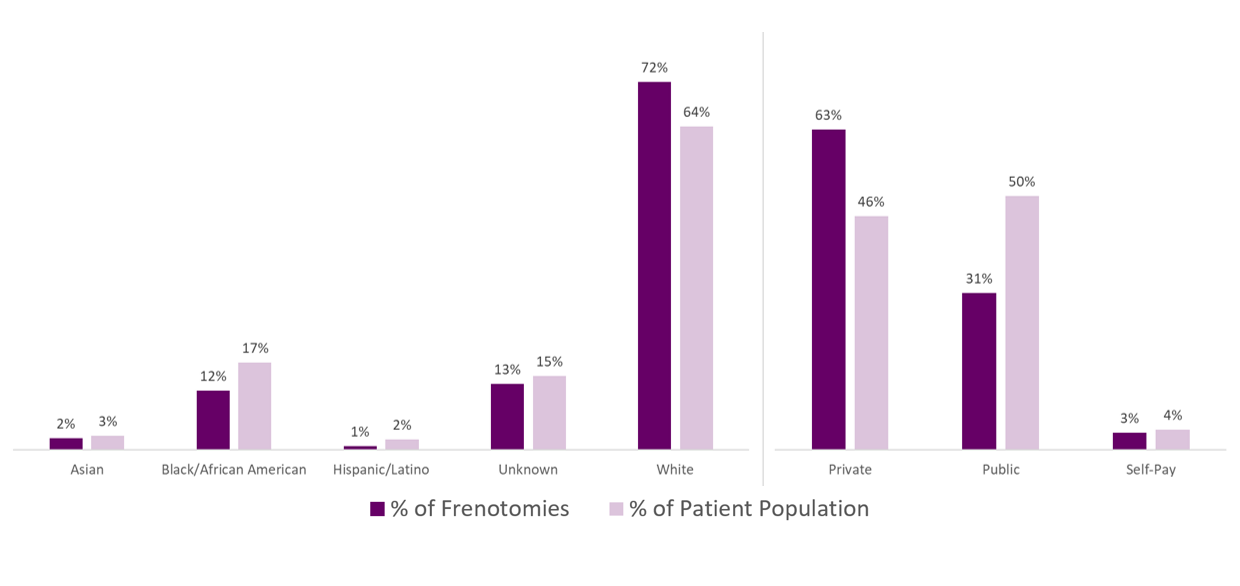Breastfeeding/Human Milk
Breastfeeding/Human Milk 2: Addressing Inequities in Lactation
378 - Racial, ethnic and socioeconomic disparities in frenotomy practice
Publication Number: 378.102
- AK
Annemarie F. Kelly, MD (she/her/hers)
Staff Physician
Cincinnati Children's Hospital Medical Center
Cincinnati, Ohio, United States
Presenting Author(s)
Background:
Ankyloglossia, or tongue-tie, is a condition in which the lingual frenulum is unusually short or tight and may restrict the range of motion of the tongue. Present in 4-7% of the population, ankyloglossia can impede breastfeeding and be a source of nipple pain. Surgical intervention through frenotomy has increased nearly 10-fold in the past decade. Racial disparities exist in breastfeeding rates, but little is known about disparities among those who undergo frenotomy.
Objective: To identify racial or socioeconomic disparities in frenotomy performance across our region.
Design/Methods: We performed a retrospective cohort study of frenotomy performance throughout the Cincinnati area from June 2019 to January 2021. Newborns seen by a Cincinnati Children's physician at one of the twelve regional birth hospitals during this time period were included. Patients who underwent a frenotomy procedure were identified through billing data and were grouped according to their race and ethnicity as well as their health insurance status (public vs private vs self-pay). Chi-squared analysis was performed to test differences between the groups.
Results: Of the 37,335 infants born during this time period, 3.4% underwent a frenotomy. Those who identified as White accounted for 64% of our patient population, and they received 72% of the frenotomies performed. Black infants were 1.7 times less likely to get a frenotomy (odds ratio 95% CI 1.44-2.05; p< 0.001) and Hispanics 3.4 times less likely (odds ratio 95% CI 1.77-6.67p< 0.001) compared to White infants. Those with public insurance were 2.4 times less likely to receive a frenotomy than those with private insurance (odds ratio 95% CI 2.14-2.74, p< 0.001).
Conclusion(s): Prior research has demonstrated that structural and interpersonal racism are drivers of breastfeeding disparities. Our study demonstrated that there are racial, ethnic and socioeconomic disparities in which patients receive frenotomies in our geographic area. Ankyloglossia has been shown to be more common in males but there is no evidence supporting any different incidence by race. This coupled with the socioeconomic disparities suggests that further standardization is needed to eliminate variability and bias in frenotomy performance. One limitation to our study is that we did not adjust for breastfeeding intention, and providers may only perform the procedure in breastfed infants. Further work is needed to improve support for breastfeeding mothers, especially those in marginalized groups, and eliminating biases in frenotomy practice appears to be an area in need of improvement.
.png)
